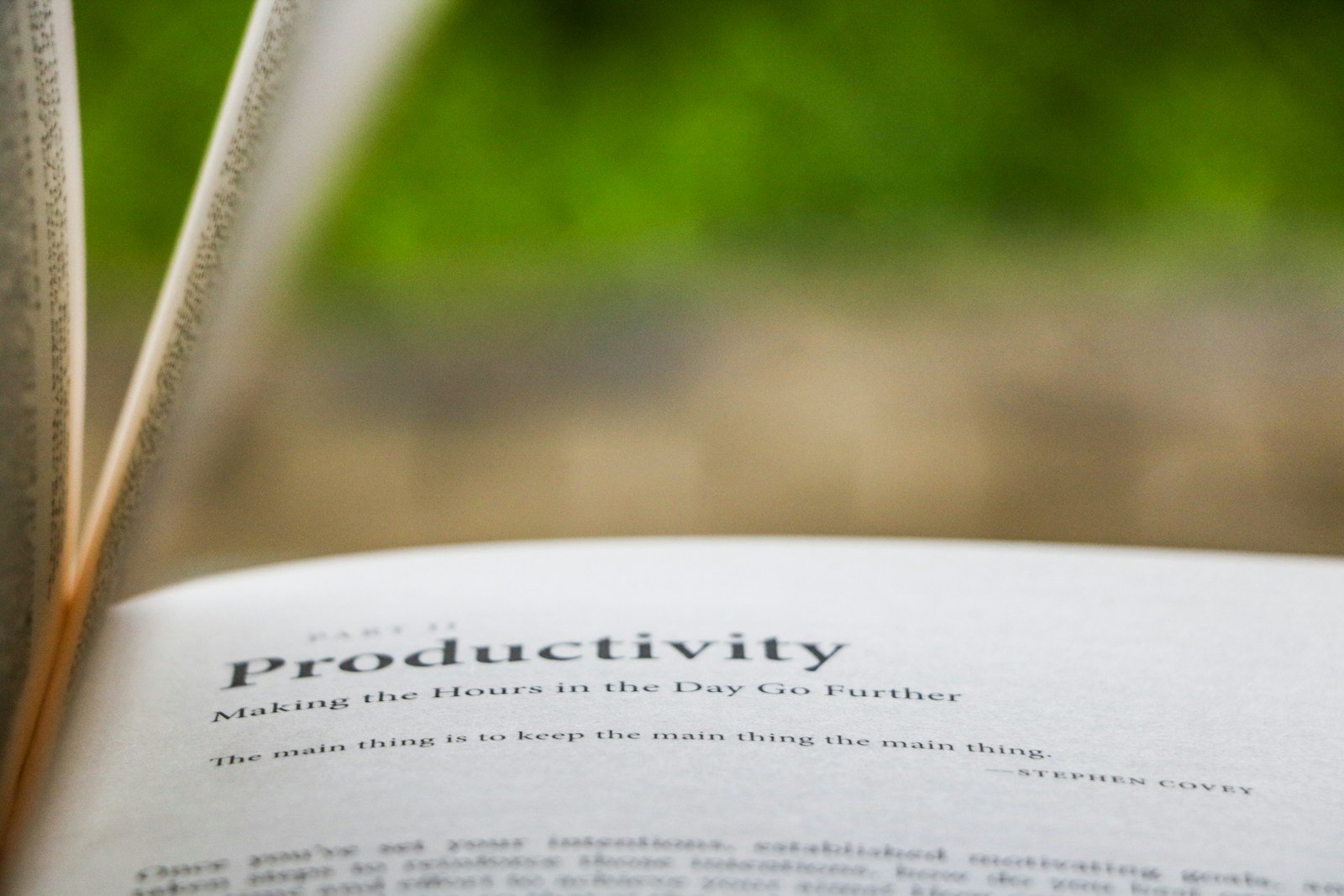Understanding Procrastination: The Silent Productivity Killer
Procrastination is more than just a simple delay in completing tasks; it is a complex behavioral phenomenon that affects many individuals across various aspects of life. At its core, procrastination involves the voluntary postponement of important tasks despite knowing that this delay may lead to negative outcomes. It is often driven by underlying psychological and emotional factors that create barriers to productivity and efficiency.
Several key factors contribute to the tendency to procrastinate. One significant factor is the fear of failure. When individuals are overly concerned about making mistakes or not meeting expectations, they may avoid starting tasks altogether. This fear can be paralyzing, leading to an endless cycle of delay and guilt. Similarly, perfectionism can play a major role. People who strive for perfection may find it difficult to take action, fearing that their efforts will fall short of their high standards.
Lack of motivation is another critical element influencing procrastination. When tasks seem uninteresting or lack immediate rewards, it becomes challenging to muster the enthusiasm required to begin. This lack of intrinsic motivation often leads to procrastination, as individuals seek out more enjoyable or less demanding activities as a form of escape.
Understanding these root causes is essential for recognizing one’s own procrastination triggers. By identifying the underlying reasons for delaying tasks, individuals can develop targeted strategies to overcome procrastination and boost productivity. For instance, breaking tasks into smaller, manageable steps can reduce the intimidation factor, while setting realistic goals can alleviate the pressure of perfectionism.
The impact of procrastination extends beyond mere task completion. It can significantly affect mental health and overall well-being. Chronic procrastination is linked to increased stress, anxiety, and feelings of inadequacy. Over time, this can erode self-esteem and lead to a sense of helplessness. Moreover, the constant pressure of unfinished tasks can hinder one’s ability to focus and achieve long-term goals, ultimately diminishing one’s potential for success.
By understanding the multifaceted nature of procrastination, individuals can take proactive steps towards conquering laziness and enhancing their time management skills. This awareness not only helps in getting things done fast but also fosters a healthier, more balanced approach to productivity and personal growth.
Hack #1: The Pomodoro Technique – Work Smarter, Not Harder
The Pomodoro Technique is an effective time-management method designed to help you overcome procrastination and boost productivity. Developed by Francesco Cirillo in the late 1980s, this technique breaks your work into focused intervals, typically 25 minutes long, called “Pomodoros,” followed by a short 5-minute break. After completing four Pomodoros, you take a longer break of 15 to 30 minutes.
Implementing the Pomodoro Technique is straightforward. Start by choosing a task you need to complete. Set a timer for 25 minutes and work on the task without interruptions. Once the timer rings, take a 5-minute break to rest and recharge. Repeat this cycle three more times. After completing four Pomodoros, take a more extended break to relax and rejuvenate. This structured approach helps maintain high concentration levels and prevents burnout.
Several tools and apps can assist you in applying the Pomodoro Technique effectively. Popular options include the Pomodone app, Focus Booster, and Tomato Timer. These tools offer customizable timers, analytics to track your progress, and notifications to remind you when it’s time to take a break or start a new Pomodoro.
To maximize the benefits of the Pomodoro Technique, consider the following tips:
1. **Eliminate Distractions:** Before starting your Pomodoro, ensure your workspace is free from distractions. Close unnecessary tabs, mute notifications, and inform those around you that you need focused time.
2. **Prioritize Tasks:** Begin with the most critical or challenging tasks when your concentration levels are highest. Use the momentum gained from completing these tasks to tackle less demanding ones later in the day.
3. **Be Consistent:** Consistency is key to mastering the Pomodoro Technique. Stick to the intervals and breaks as closely as possible to develop a productive rhythm.
4. **Reflect and Adjust:** At the end of each day, review your progress. Identify what worked well and where you experienced difficulties. Adjust your approach accordingly to improve your efficiency over time.
By incorporating the Pomodoro Technique into your daily routine, you can conquer laziness, manage your time more effectively, and get things done fast, all while maintaining a balanced workflow.
Hack #2: The Power of Micro-Tasks – Breaking Down Big Projects
One of the most effective strategies to overcome procrastination and boost productivity is the utilization of micro-tasks. This method involves breaking down large, daunting projects into smaller, more manageable components, making it easier to get things done fast. By dividing a big project into micro-tasks, you can significantly reduce the feeling of overwhelm that often leads to procrastination.
For instance, if you are working on a comprehensive research paper, instead of viewing it as a single, massive task, you can break it down into smaller tasks such as selecting a topic, conducting preliminary research, creating an outline, writing the introduction, and so forth. Each of these micro-tasks can be further divided if necessary, allowing for a more structured and less intimidating approach to your project.
Another practical example is preparing for a presentation. Rather than seeing it as a single, insurmountable task, deconstruct it into steps like researching your topic, creating slides, rehearsing sections, and refining your delivery. This method not only helps in managing time more efficiently but also ensures that each aspect of the project receives adequate attention.
Prioritizing these micro-tasks is crucial for steady progress. Start by listing all the tasks and then arrange them in order of importance and urgency. Utilizing tools such as to-do lists, digital planners, or project management apps can be particularly effective. Focus on completing the highest priority micro-tasks first, which will create a sense of accomplishment and momentum, making it easier to tackle subsequent tasks.
Incorporating micro-tasks into your workflow is a powerful time management tip. It not only helps to conquer laziness but also fosters a sense of achievement with each small task completed, thereby propelling you towards your larger goals. By breaking down big projects into micro-tasks, you can transform daunting assignments into a series of attainable steps, ensuring consistent progress and productivity.
Hack #3: The Two-Minute Rule – Overcoming the Initial Hurdle
The Two-Minute Rule is a straightforward yet highly effective strategy to overcome procrastination and boost productivity. The principle is simple: if a task can be completed in two minutes or less, tackle it immediately. For more substantial tasks, commit to working on them for just two minutes to get started. This method leverages the psychology of inertia and momentum, making it easier to conquer laziness and enhance time management skills.
This rule works because the initial resistance to starting a task is often the biggest hurdle. By breaking tasks down into manageable chunks, you can bypass the mental barriers that lead to procrastination. When you commit to just two minutes, the task appears less daunting, and once you begin, you’re likely to continue working beyond the initial time block.
Consider applying the Two-Minute Rule to various aspects of your daily life. In a professional setting, use it to quickly respond to emails, organize your workspace, or initiate a small segment of a larger project. These brief actions can significantly boost productivity by reducing the accumulation of minor tasks that can become overwhelming when left unattended.
In personal scenarios, the Two-Minute Rule can be equally transformative. Use it to make your bed, wash a few dishes, or start a short workout. These small accomplishments can create a sense of achievement, encouraging further action and helping you get things done fast.
By integrating the Two-Minute Rule into your routine, you can effectively overcome the initial hurdle of starting tasks, thereby improving overall productivity. This approach not only helps in conquering laziness but also fosters a proactive mindset, making ambitious projects more manageable and achievable.

